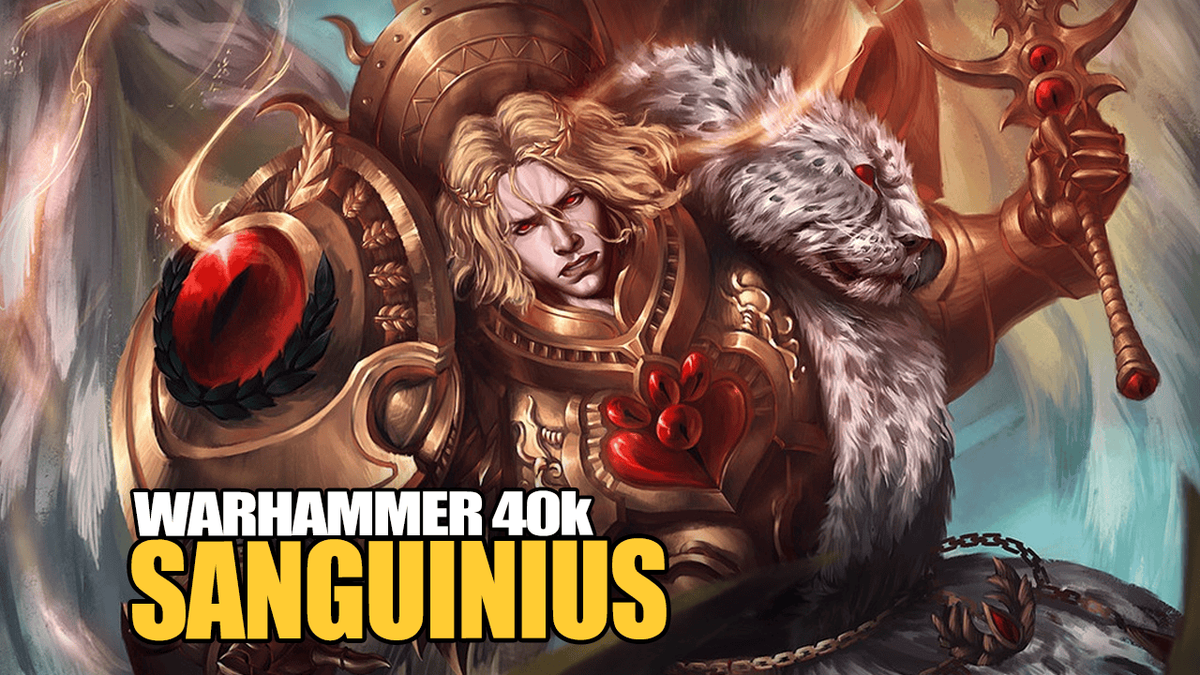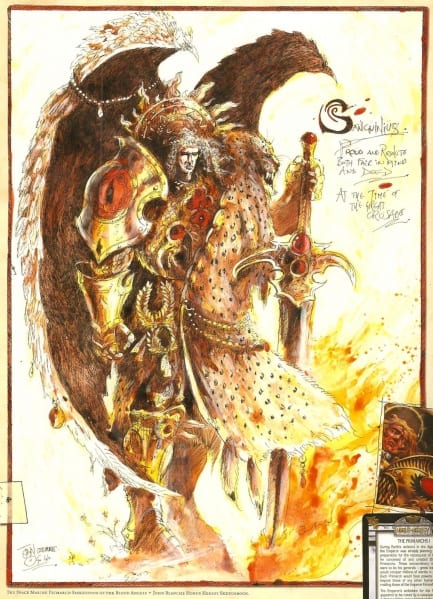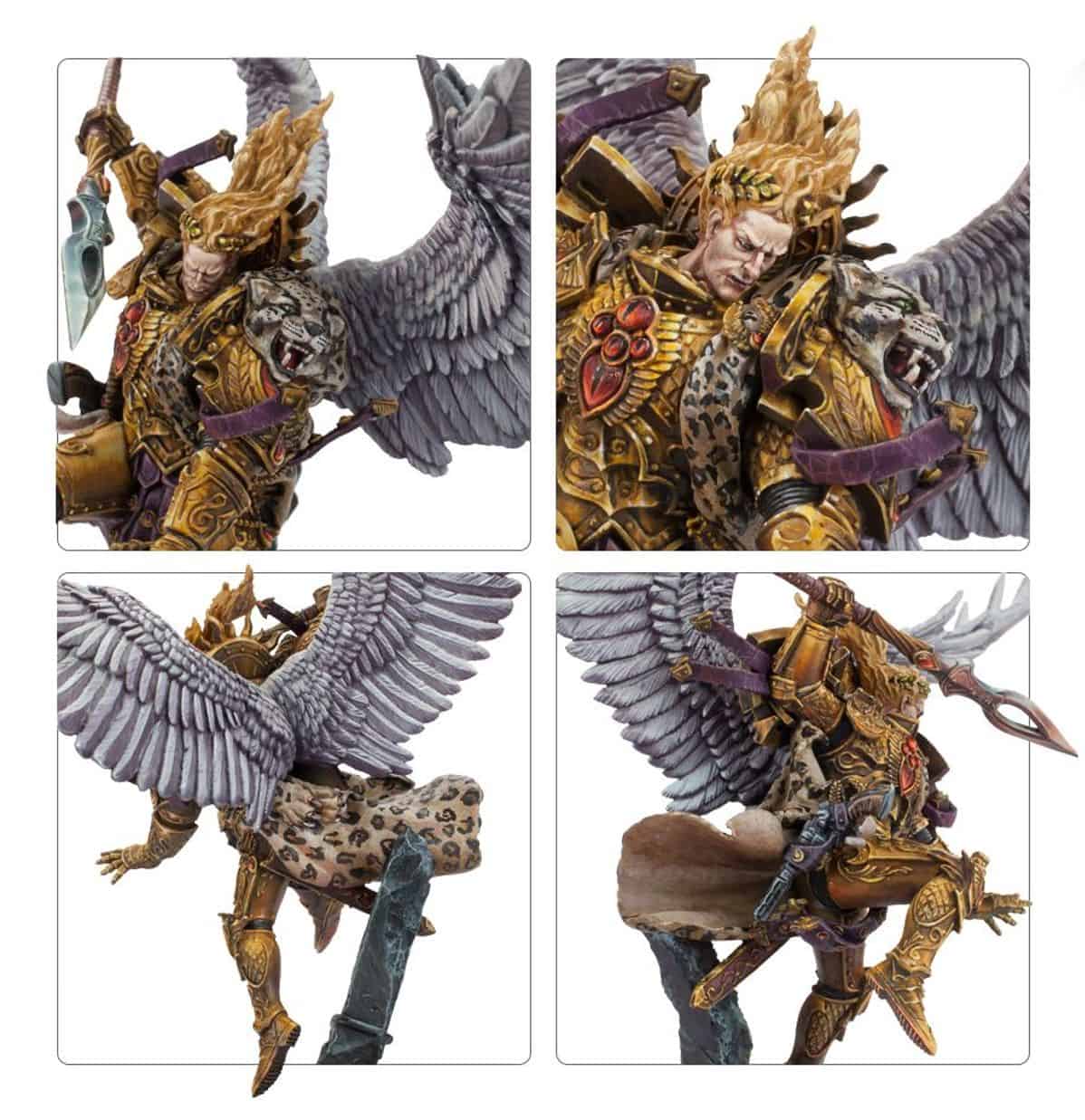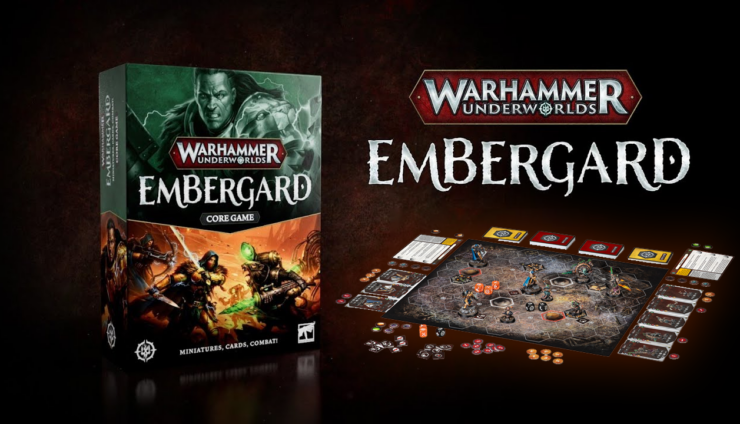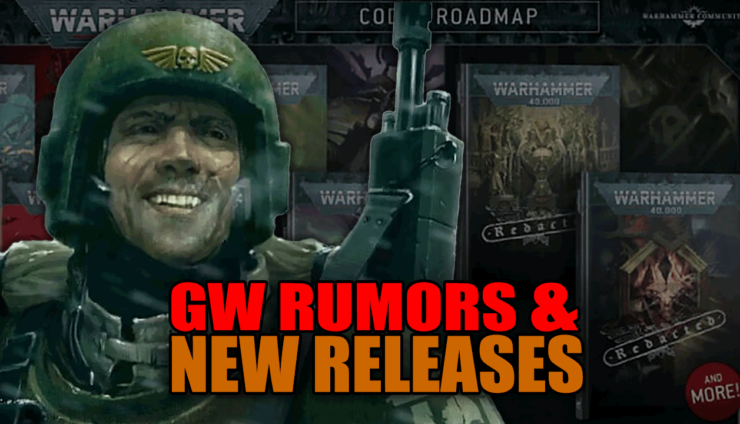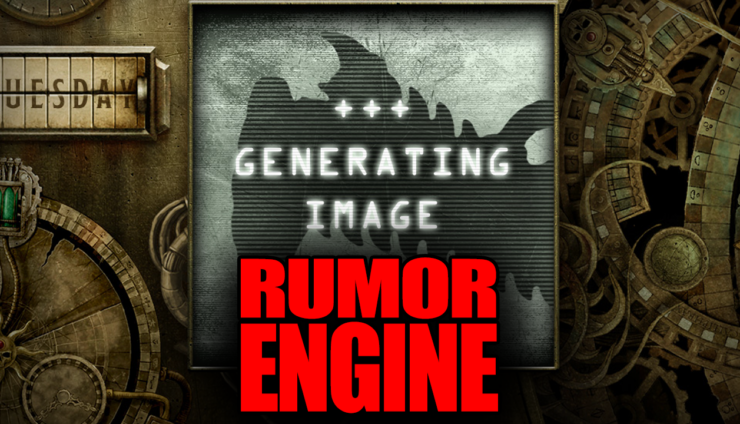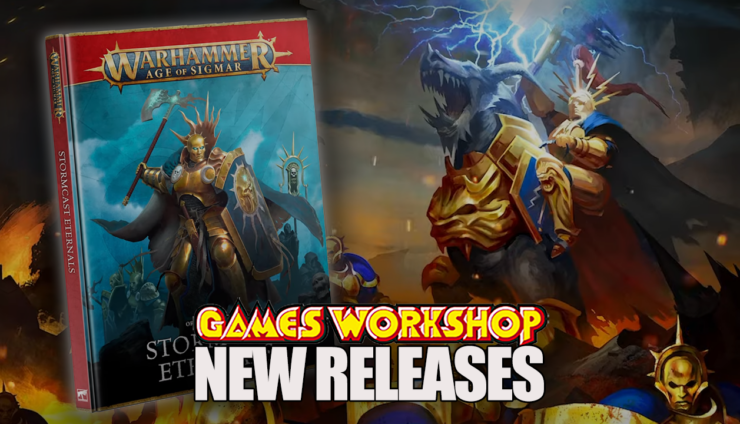Follow Sanguinius’ rise as the Blood Angels’ Primarch, from the Great Crusade’s triumphs to his unforgettable last stand in the Warhammer 40k universe.
The Ultimate Guide to Sanguinius in Warhammer 40k: Legacy, Death, & Heroism
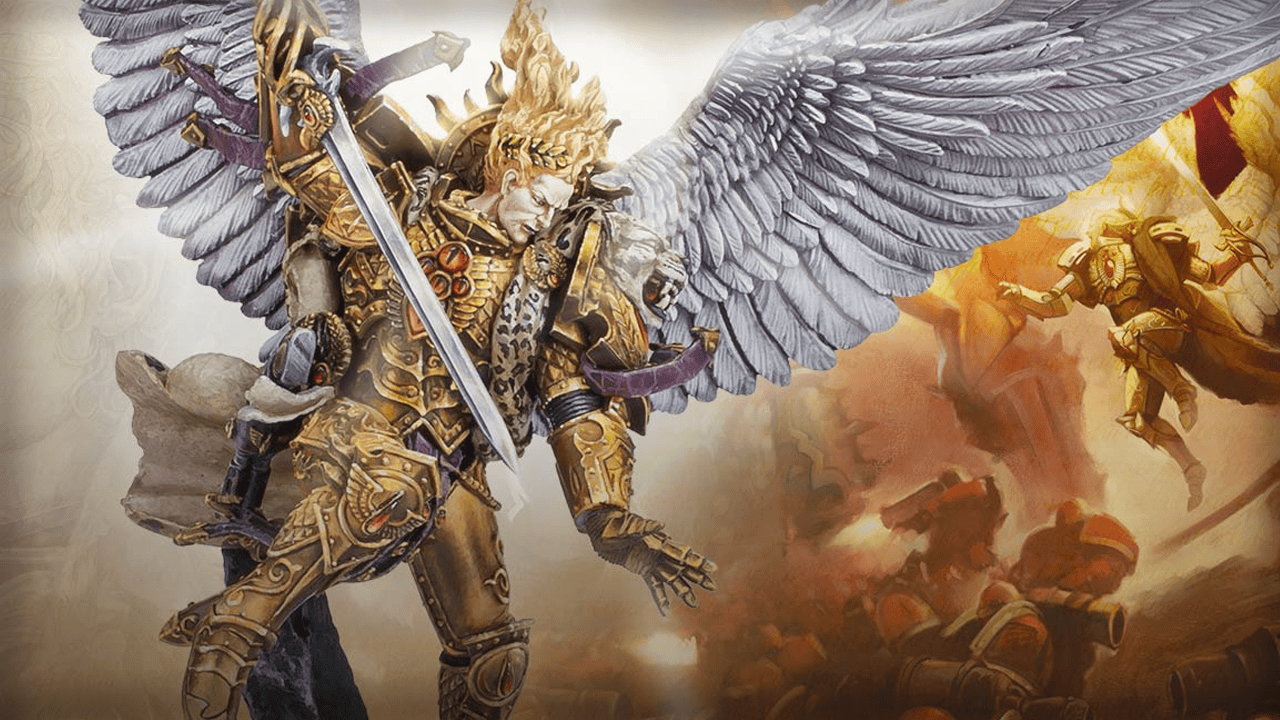
- Introduction: The Legacy of Sanguinius in Warhammer 40k
- Origins of Sanguinius: The Angel of Baal
- Rise to Power: Sanguinius as Primarch of the Blood Angels
- Major Battles and Heroic Deeds of Sanguinius in Warhammer 40k
- The Horus Heresy and the Tragic Fall of Sanguinius
- Sanguinius’ Legacy in Warhammer 40k
- Playing and Painting Sanguinius in Warhammer 40k
- Frequently Asked Questions about Sanguinius in Warhammer 40k
Introduction: The Legacy of Sanguinius in Warhammer 40k
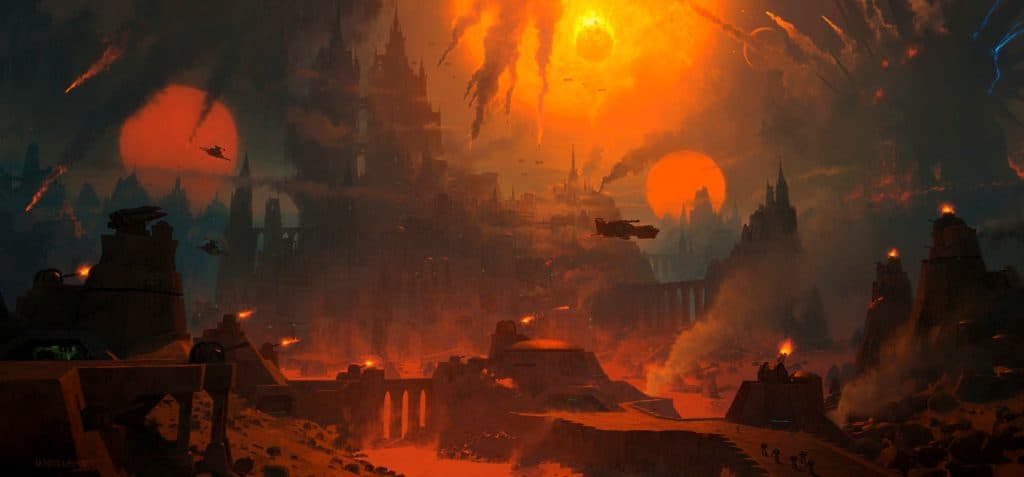
But what makes him so important? For one, he’s the Primarch of the Blood Angels, a legion of Space Marines known for their martial prowess and a few unfortunate genetic quirks we’ll get into later. His leadership during the Great Crusade helped unite humanity’s fractured colonies under the Emperor’s banner. And his ultimate sacrifice during the Siege of Terra? Well, that’s the kind of heroic exit that keeps a Primarch’s name echoing throughout history. But before the wings and the drama, we have to understand where it all began: on the irradiated rock known as Baal.
Origins of Sanguinius: The Angel of Baal
 Why Did Sanguinius Have Wings?
Why Did Sanguinius Have Wings?
Let’s address the most eye-catching part of Sanguinius first: those wings. Why does one of the Emperor’s gene-crafted sons have the power of flight? In true 40k fashion, the answer lies in science—the Emperor’s science. Like his brothers, Sanguinius was genetically engineered to be the perfect warrior, but something extra snuck into his genetic code, gifting him a glorious pair of white-feathered wings. While most of the Primarchs were busy being tall and intimidating, Sanguinius had the added bonus of flying into battle like a celestial fury. Talk about making an entrance.
Those wings weren’t just for show either. They were a physical manifestation of his nobility and grace, making him stand out among the often more brutish Primarchs. While Horus had raw charisma and Guilliman had political savvy, Sanguinius had the look of a literal angel—a symbol of hope for his legion and the Imperium. And while some might think wings would make him a bit of a softie, they were dead wrong. Sanguinius was as lethal as they come, with his wings only adding to his battlefield agility and presence. In the grim darkness of the 41st millennium, being able to fly is a tactical advantage, not just a good Instagram moment.
The Harsh World of Baal: Birth of an Angel
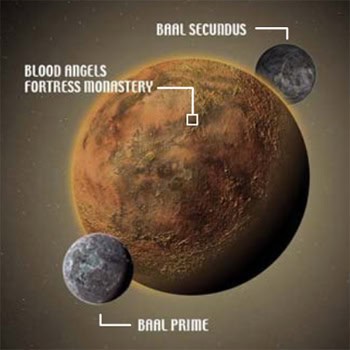
When Sanguinius was discovered by one of Baal’s nomadic tribes, they knew he was special. Sure, the wings were a dead giveaway, but Sanguinius quickly proved himself through his natural leadership and unmatched combat ability. He didn’t just survive on Baal—he thrived. His early life wasn’t easy, growing up in a world constantly threatened by mutant hordes and environmental dangers. But it’s precisely this brutal upbringing that shaped him into the compassionate and fearless leader he would become.
Sanguinius didn’t just rule over Baal’s tribes; he united them. He brought peace and stability to a planet that had only known strife. The harshness of Baal tempered his resolve, forging him into a leader who understood both the value of life and the necessity of war. His ability to balance compassion with deadly efficiency is what made him such a beloved figure, not just to his legion but to the Imperium as a whole.
Rise to Power: Sanguinius as Primarch of the Blood Angels
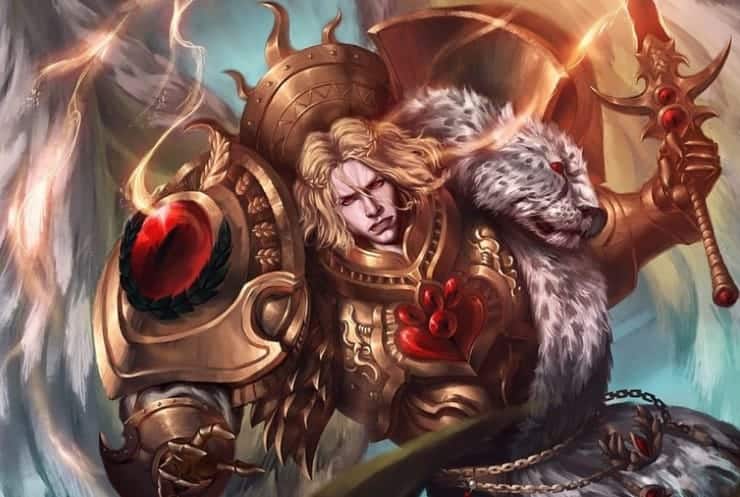
The Emperor’s Discovery of Sanguinius
Picture this: the Emperor of Mankind, traveling the galaxy to reunite his scattered gene-sons, stumbles upon Baal. Now, Baal isn’t exactly a vacation spot. It’s a radioactive wasteland filled with mutants, and the Emperor probably had to clean his boots several times just to make it through. But amidst this chaos, he finds Sanguinius—a literal angel in the middle of a wasteland.
When the Emperor finally laid eyes on Sanguinius, it wasn’t just the wings that stood out (though let’s be honest, they were hard to miss). No, it was the way Sanguinius had brought order to a planet that should’ve eaten him alive. The Primarch didn’t just survive on Baal; he thrived, uniting the nomadic tribes under his leadership and fending off mutant hordes with both tactical brilliance and good old-fashioned swordsmanship.
For the Emperor, finding Sanguinius must have been like finding a rare treasure. Not only was he a genetic marvel, but he also had a leadership style that balanced strength and compassion, a quality that many of his brothers lacked. Sanguinius didn’t need a pep talk to accept his role in the Great Crusade—he knew his place, and he knew what the Emperor was offering: a chance to unite humanity and bring order to the galaxy. With wings flared and sword at his side, Sanguinius took up the mantle of Primarch of the IX Legion—the Blood Angels.
The Transformation of the Blood Angels Legion
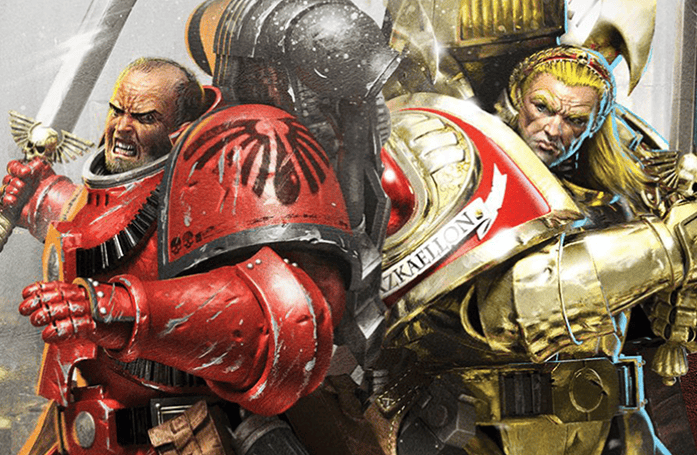
Under Sanguinius’ leadership, the Blood Angels didn’t just become effective; they became iconic. His ability to inspire those around him, combined with his keen strategic mind, turned the Blood Angels into an army that excelled in close-quarters combat. When the Blood Angels hit the battlefield, they hit hard and fast. Think of them as the galaxy’s finest shock troops, descending from the skies with their Primarch leading the charge like some divine warrior from ancient myth.
But Sanguinius didn’t just want his sons to be fierce. He instilled in them a sense of nobility and honor, traits that would define the Blood Angels for millennia to come. He understood that war wasn’t just about crushing your enemies—it was about showing humanity what they were fighting for. Sure, the Blood Angels could rip apart entire armies with their melee prowess, but they did it with style, grace, and a sense of higher purpose. Sanguinius turned war into an art form, and his legion followed his example.
In battle, Sanguinius was always at the forefront, wings spread and sword swinging, embodying everything his legion stood for. His Blood Angels took his lead, fighting with a ferocity and discipline that left their enemies reeling. Under Sanguinius, the Blood Angels became more than just another legion—they became legends, warriors whose deeds would echo throughout history.
Major Battles and Heroic Deeds of Sanguinius in Warhammer 40k

The Great Crusade and the Expansion of the Imperium
The Great Crusade was the Emperor’s galaxy-wide road trip to reunite humanity under one banner. This wasn’t just about spreading Imperial glory; it was a high-stakes, high-casualty effort to secure humanity’s future. Sanguinius, as the leader of the Blood Angels, played a huge role in this crusade. You see, the guy wasn’t just a swordsman—he was also a diplomat when needed, which made him a key player among the Primarchs.
Sanguinius’ victories during the Great Crusade were as legendary as his angelic wings. He led the Blood Angels to triumph after triumph, taking on the toughest battles with a lethal combination of strategy, speed, and sheer power. Whether his legion was crushing xenos or bringing rebellious human worlds into compliance, Sanguinius did it with a style that no other Primarch could quite match. And let’s not forget: when Sanguinius arrived, his appearance alone—golden armor, blazing sword, glorious wings—had a tendency to make the enemy rethink their life choices.
But Sanguinius wasn’t all about the swordplay. He had a talent for diplomacy, and his relationship with his fellow Primarchs reflected this. Among the more volatile personalities (Horus and Angron, we’re looking at you), Sanguinius was the cool-headed, reasonable one. His brothers respected him, and when things got tense, Sanguinius was often the one Primarch they’d actually listen to. His ability to balance brute force with compassion and negotiation made him a true linchpin of the Great Crusade.
Signus Prime: Sanguinius’ Fight Against Chaos
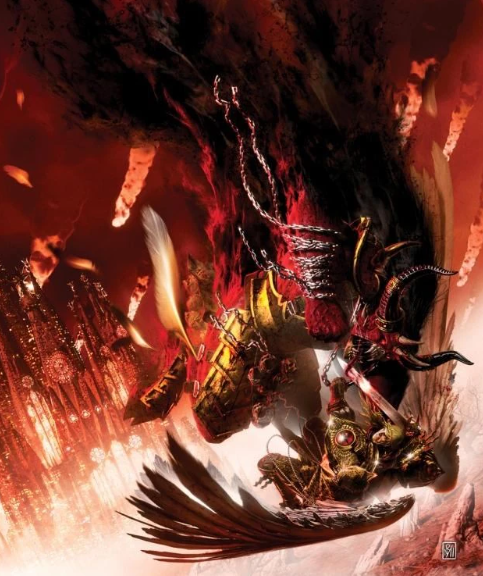
The mastermind of this lovely surprise? Ka’Bandha, a Chaos Daemon who made it his personal mission to wreck Sanguinius and his Blood Angels. Ka’Bandha was one of Khorne’s top guys, and this battle was personal for him. The two clashed in an epic fight, with Sanguinius going head-to-head against this demonic powerhouse. The first round didn’t go so well—Ka’Bandha actually broke Sanguinius’ legs and sent the Blood Angels into a psychic frenzy, triggering the Red Thirst, that dark flaw lurking in their gene-seed.
But let’s not count the Great Angel out just yet. Sanguinius, being the absolute unit that he is, managed to recover from his injuries, and in their second fight, he struck Ka’Bandha down. The victory wasn’t without cost, though. The psychological damage inflicted on the Blood Angels during the battle was severe, and many of his sons were left permanently scarred. The Red Thirst, a genetic curse that haunted the Blood Angels, became a much more serious problem after this fight.
Signus Prime wasn’t just another battle—it was a turning point. It marked Sanguinius’ first real encounter with the true horror of Chaos and a wake-up call for the Imperium. For the Blood Angels, it was a day of bloodshed and psychic torment, but also a day that solidified their bond with their Primarch. No matter the odds, Sanguinius would always lead them—whether with his blade, his wings, or his sheer will to protect humanity.
The Horus Heresy and the Tragic Fall of Sanguinius

How Did Sanguinius Die?
Sanguinius’ death took place during the Siege of Terra, the final, desperate battle for the Emperor’s Palace. As Horus’ traitor legions stormed the walls, Sanguinius stood at the forefront of the defense. He knew what was coming. You see, Sanguinius wasn’t just a warrior; he had a gift—or a curse, depending on how you look at it—of foresight. He saw visions of his death, knowing that it would come at the hands of someone he once called brother: Horus. And yet, despite knowing his fate, Sanguinius fought on, never wavering in his loyalty to the Emperor.
As the siege raged, Sanguinius, alongside the Emperor and Rogal Dorn, teleported aboard Horus’ flagship, the Vengeful Spirit. The plan was simple: confront Horus and end this rebellion. But, of course, nothing goes smoothly in Warhammer 40k. Sanguinius was separated from the others and found himself alone, face-to-face with Horus in all his corrupted, Chaos-fueled glory.
How Did Horus Kill Sanguinius?
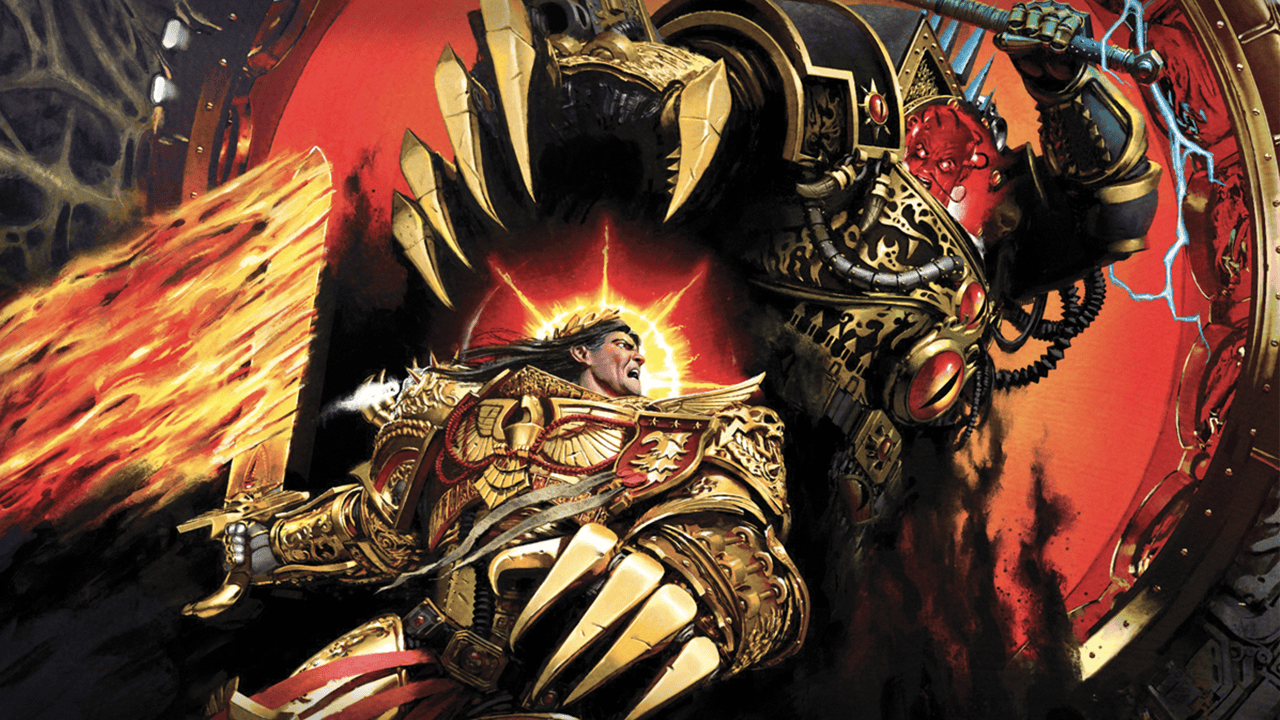
- Audible Audiobook
- Dan Abnett (Author) - Jonathan Keeble (Narrator)
- English (Publication Language)
- 11/04/2023 (Publication Date) - Black Library (Publisher)
Last update on 2024-10-08 / Affiliate links / Images from Amazon Product Advertising API
The fight was brutal. Sanguinius, weakened from the Siege of Terra, managed to hold his own for a time, even landing a critical blow that cracked Horus’ armor. This strike, though seemingly minor at the time, would later give the Emperor the opening he needed to defeat Horus. But Sanguinius knew this wasn’t a battle he could win. Horus, empowered by the Chaos gods, was unstoppable, and after a fierce struggle, he dealt the fatal blow to Sanguinius, killing the Primarch.
Sanguinius’ death was a devastating loss for the Imperium, but it wasn’t in vain. His final act of defiance—cracking Horus’ armor—was the key to the Emperor’s eventual victory. When the Emperor finally faced Horus, that weak spot was what allowed him to strike the final, killing blow. Sanguinius, in death, had set the stage for the Imperium’s survival.
The Black Rage and the Red Thirst: Curses of the Blood Angels

But after Sanguinius’ death, something even darker emerged: the Black Rage. The Black Rage is more than just a berserk fury—it’s a psychic echo of Sanguinius’ final moments aboard the Vengeful Spirit. When a Blood Angel succumbs to the Black Rage, they are consumed by visions of their Primarch’s last battle with Horus, believing they are Sanguinius himself. Those afflicted are lost in a frenzy, reliving their Primarch’s death over and over again until they fall in battle.
This curse has haunted the Blood Angels for millennia. The Black Rage, combined with the Red Thirst, has made the Blood Angels one of the most tragic legions in Warhammer 40k. While they continue to fight for the Imperium, every battle is a constant struggle against the dark legacies left behind by their gene-father’s death.
Sanguinius’ Legacy in Warhammer 40k
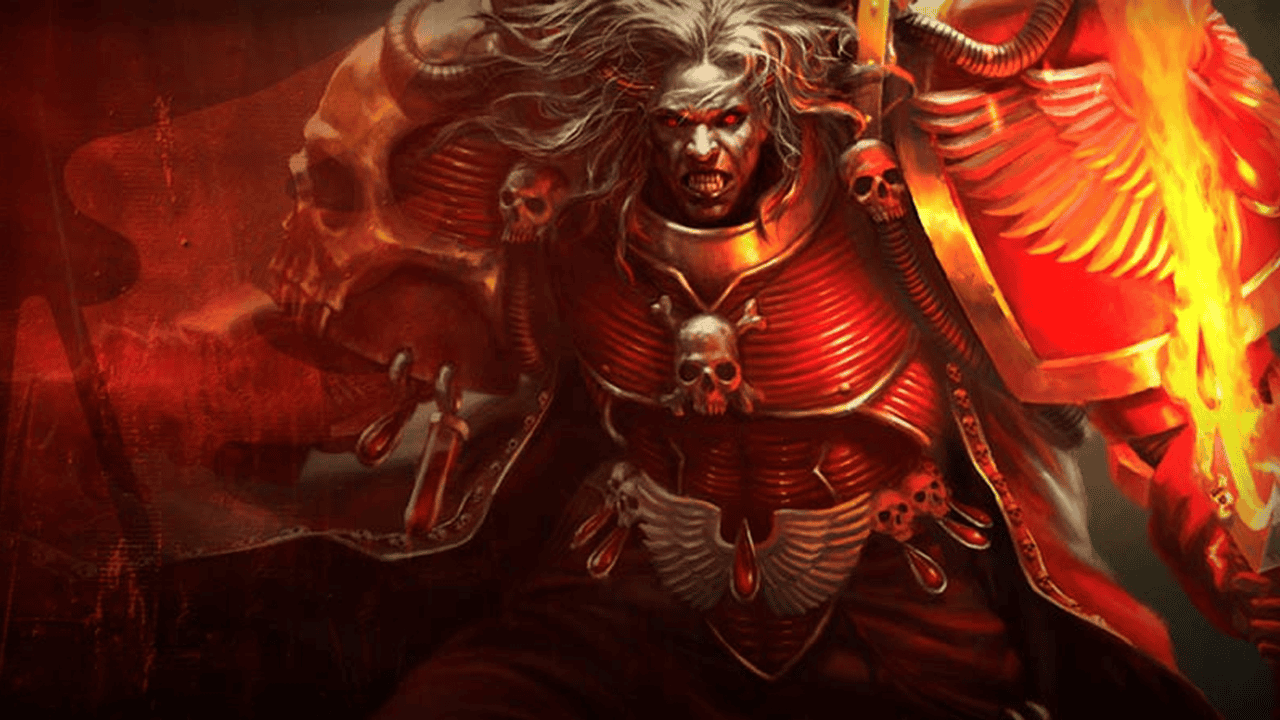
The Golden Sarcophagus: Resting Place of the Angel
After his heroic death at the hands of Horus, Sanguinius’ body was returned to Baal, the homeworld of the Blood Angels, where he was laid to rest in the Golden Sarcophagus. But this isn’t your run-of-the-mill tomb—it’s the final resting place of a Primarch, and the Blood Angels treat it as the ultimate symbol of their devotion. The sarcophagus is located in a grand, sacred crypt deep within their fortress-monastery, where it serves as a focal point for countless rituals and acts of remembrance.
For the Blood Angels, making a pilgrimage to Sanguinius’ tomb is a sacred duty. Warriors from across the galaxy come to pay their respects, seeking to gain strength and guidance from their Primarch’s eternal example. These rituals are often emotional, as they remind the Blood Angels not only of Sanguinius’ nobility but of the curses—like the Red Thirst and Black Rage—that he left behind. Every visit to the Golden Sarcophagus is a reminder of the immense sacrifice their gene-father made to protect the Imperium.
The Influence of Sanguinius on the Blood Angels and the Imperium
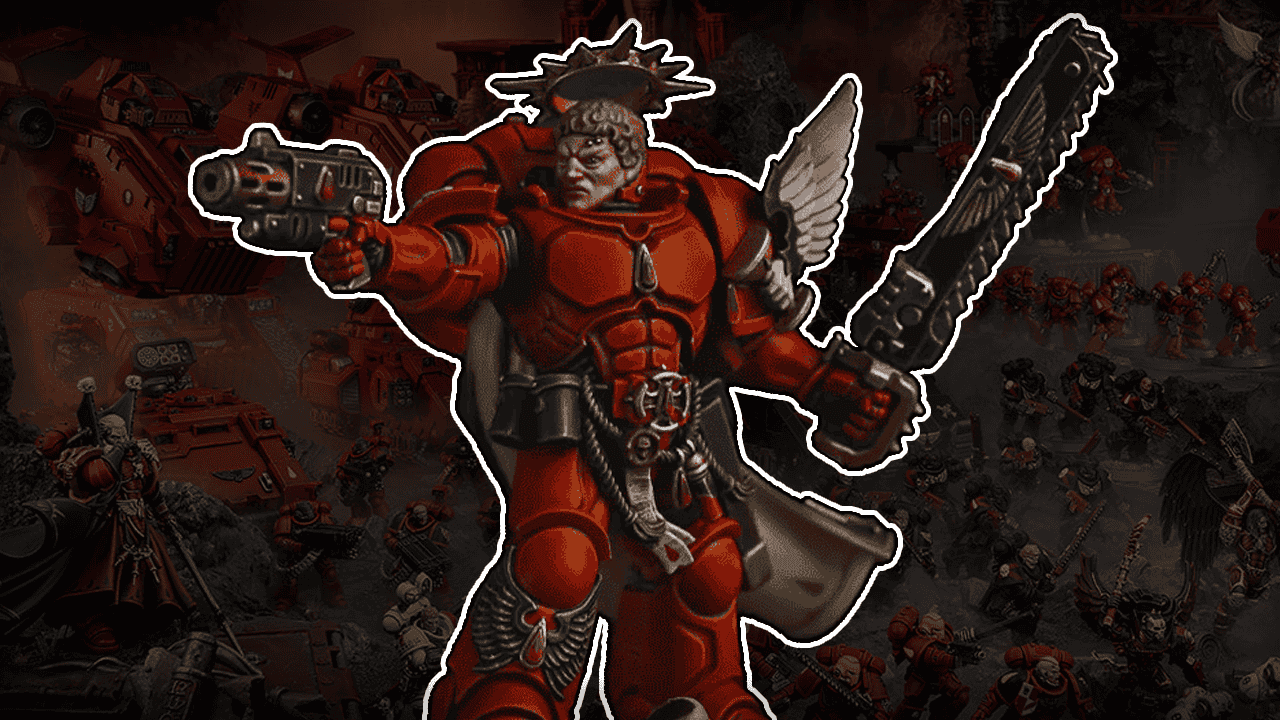
Sanguinius’ legacy goes beyond just his sons, though. Across the Imperium, he is celebrated as a martyr and a symbol of everything the Emperor’s loyalists fought for during the Horus Heresy. Statues of Sanguinius adorn Imperial shrines, and his name is invoked as a source of inspiration for millions of soldiers who take up arms in his memory.
The successor chapters of the Blood Angels—like the Flesh Tearers and Angels Encarmine—also carry the weight of Sanguinius’ influence, though many of them struggle even more with the curses passed down from their gene-seed. The Red Thirst and Black Rage, genetic flaws that drive Blood Angels into uncontrollable bloodlust and madness, remain a constant challenge. Yet, despite these flaws, Sanguinius’ spirit endures, pushing them to rise above their afflictions and serve the Imperium with honor.
Playing and Painting Sanguinius in Warhammer 40k
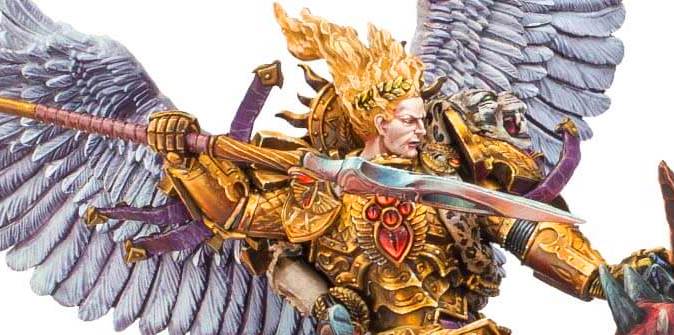
Sanguinius as a Warhammer 40k Miniature
Buy The Warhammer 40k Sanguinius Model
Forge World’s Sanguinius model is nothing short of breathtaking. Whether you’re a hardcore Blood Angels player or just appreciate incredible miniatures, this figure is the crown jewel of any collection. Sanguinius’ model captures the essence of everything he stood for: nobility, sacrifice, and a lethal elegance that few other Primarchs could match. Let’s not forget the wings—because if you’re painting Sanguinius, those are the main event.
Key features? Well, where do we start? The wings are enormous and intricately detailed, giving the model that angelic presence he’s famous for. His armor is ornate, gleaming in its baroque design, making him look like a golden demigod. The Blade Encarmine, his legendary sword, is sculpted to reflect the brutal elegance Sanguinius wielded in battle, and the Spear of Telesto (for those who prefer a different loadout) just adds to the regal lethality. Every inch of this miniature screams Primarch-level grandeur.
Tips for Painting Sanguinius
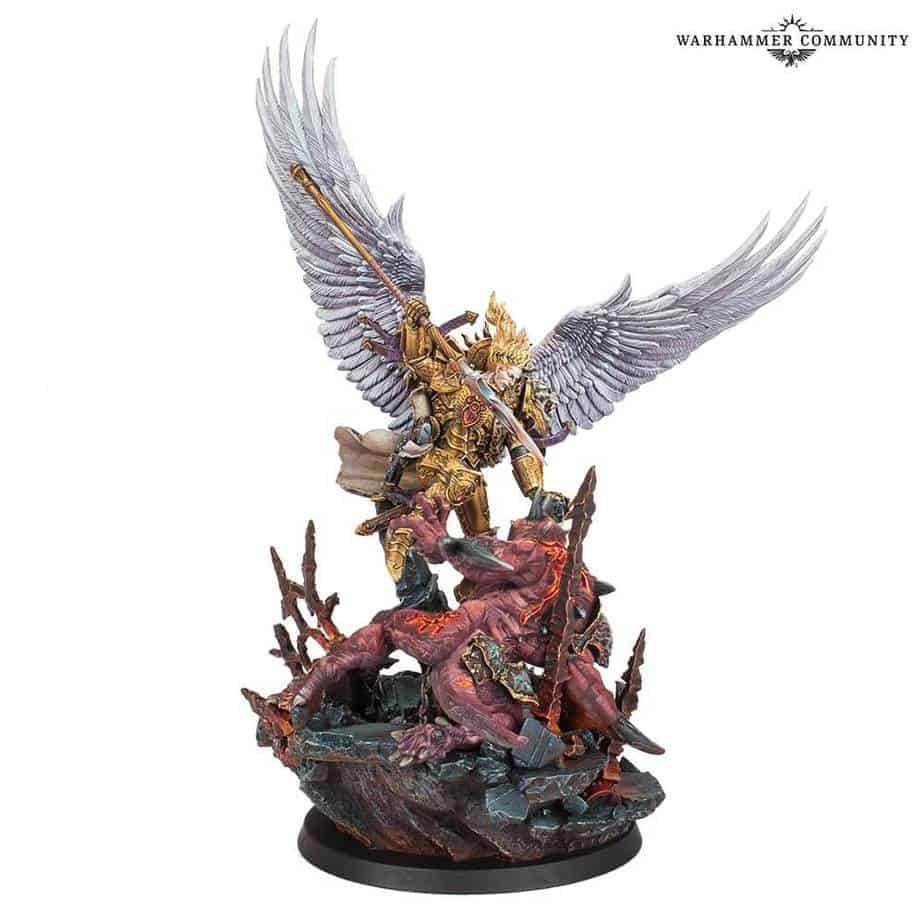
- Wings: Start with a solid white base coat. Once dry, use a grey wash to highlight the detailed feathers. You’ll want to carefully dry-brush with a brighter white to give the wings that soft, glowing look. For an ethereal touch, some painters even add a faint blue or purple hue to the shadows of the feathers.
- Armor: Sanguinius’ armor isn’t just any gold—it’s gold gold. Begin with a metallic gold base, then use a brown or sepia wash to fill in the recesses and give it depth. After that, dry-brush with a lighter gold or silver to make the raised areas gleam. This will give the armor that angelic, almost otherworldly shine.
- Face: Ah, the face of an angel—literally. For Sanguinius’ face, you want soft, blended highlights. Start with a flesh tone base, then gradually build up with lighter skin tones for highlights. Keep the eyes sharp, but not too harsh, to maintain his noble expression.
- Blade Encarmine: Use a deep metallic red for the blade. Adding in some black towards the hilt will give it that fearsome glow, and a sharp silver edge can make it look like it’s ready to cleave through traitors.
Sanguinius in Warhammer 40k Gameplay
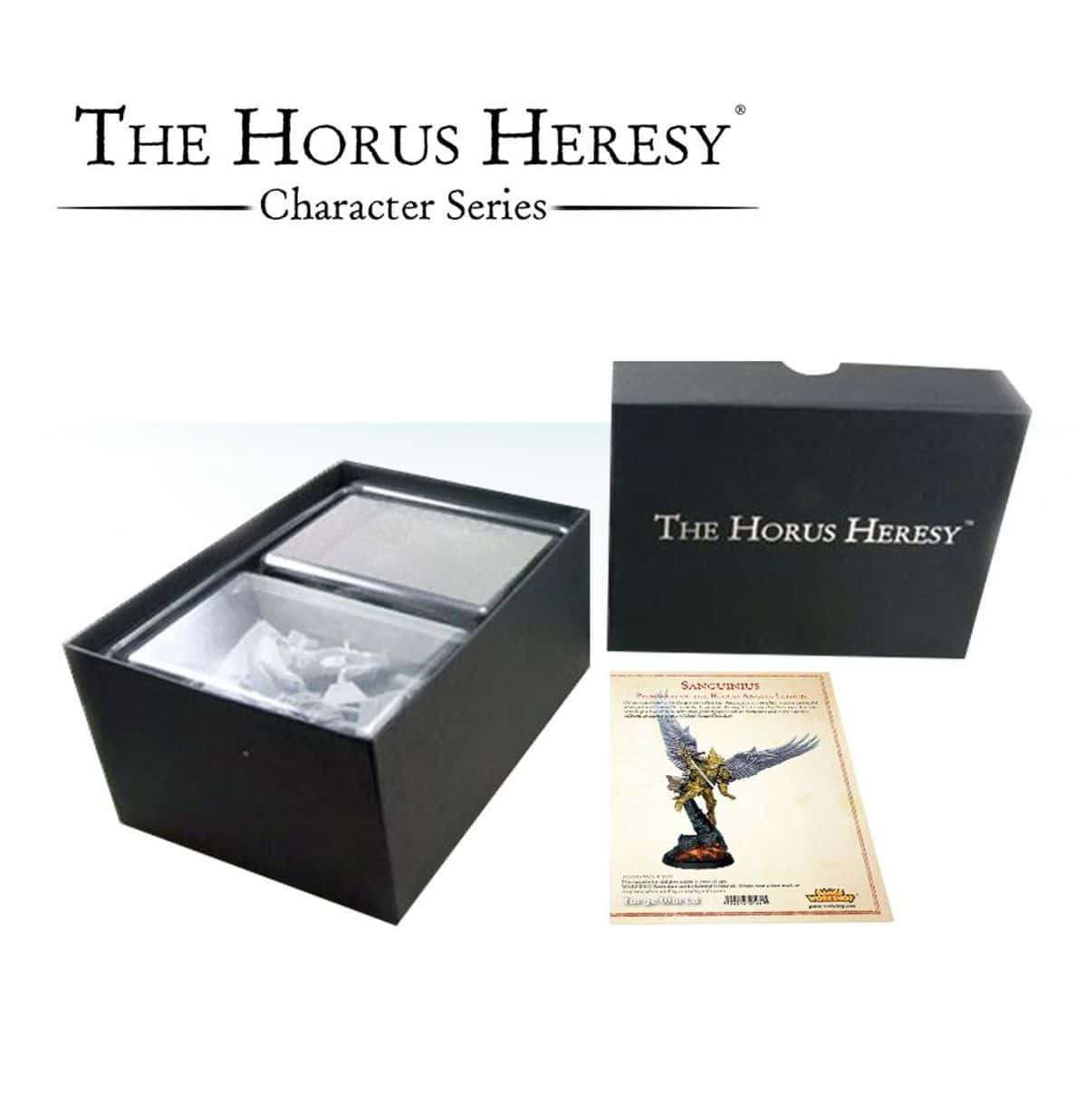
- Movement: Sanguinius’ wings aren’t just for show. He’s fast—really fast. Consider giving him a movement speed of 12″, with a re-roll for charge distances to reflect his airborne agility.
- Combat Skills: As one of the Emperor’s finest, Sanguinius should have a Weapon Skill of 2+. His attacks should be brutal, so give him multiple attack profiles, with Blade Encarmine dealing high AP and damage.
- Special Abilities: Sanguinius was known for inspiring his troops. You could create a custom “Inspiring Presence” aura, giving nearby Blood Angels +1 to Leadership and re-rolls on failed morale tests.
- Wrath of the Angel: To capture his fiery nature, allow Sanguinius to gain bonus attacks when facing Chaos units, emphasizing his personal hatred of the Ruinous Powers.
Frequently Asked Questions about Sanguinius in Warhammer 40k
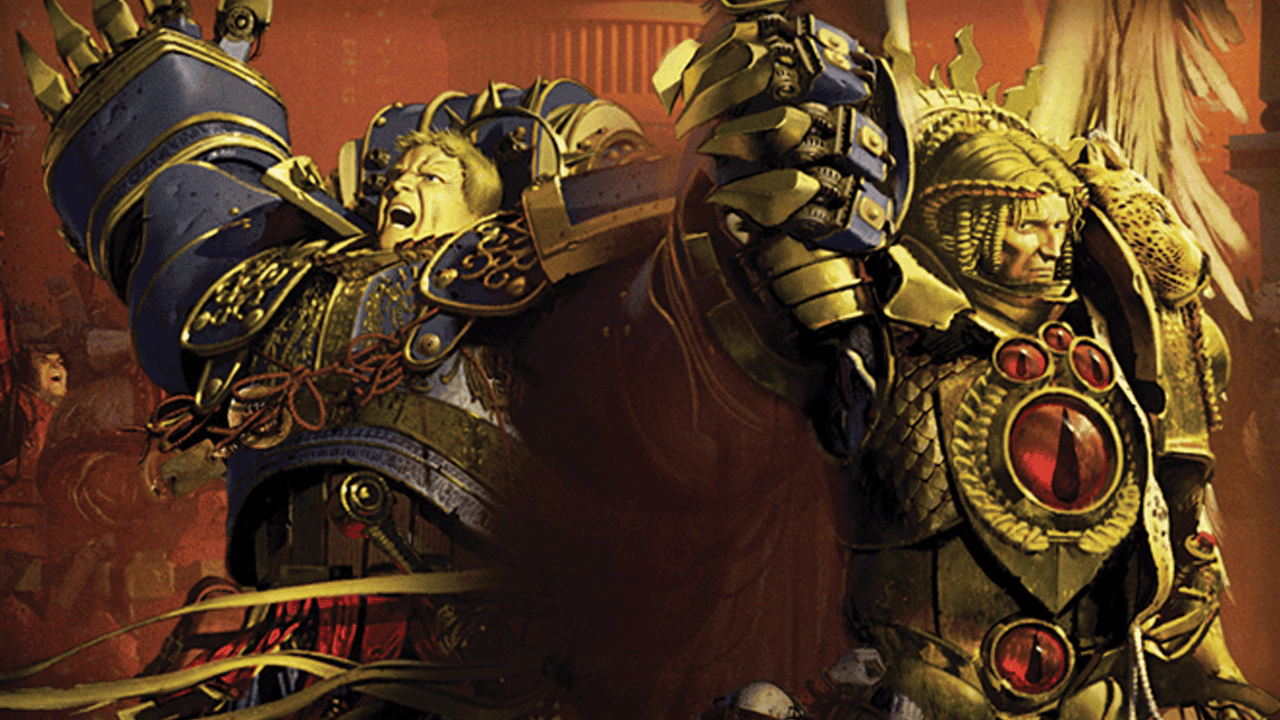
Why Did Sanguinius Have Wings?
Sanguinius’ wings weren’t just for aesthetics (though they certainly look good). His wings were the result of a genetic mutation that occurred when the Emperor created the Primarchs. This mutation set Sanguinius apart, both visually and symbolically, marking him as an angelic figure to his Blood Angels and the Imperium. His wings allowed him to fly, which made him a force to be reckoned with on the battlefield.
How Did Sanguinius Die?
Sanguinius met his tragic end during the Siege of Terra, the climactic battle of the Horus Heresy. After defending the Imperial Palace, he and a few others teleported aboard the Vengeful Spirit, Horus’ flagship. Sanguinius confronted Horus in single combat, knowing full well his death was fated—his prescient visions had warned him of it. Still, he fought on, displaying immense courage before Horus finally struck him down.
How Did Horus Kill Sanguinius?
Horus, empowered by the Chaos Gods, was at the height of his strength when he faced Sanguinius. Despite the Primarch’s valiant efforts and managing to even crack Horus’ armor, Sanguinius was overpowered. In the end, Horus struck the fatal blow, killing Sanguinius in their epic confrontation aboard the Vengeful Spirit. This final act of sacrifice weakened Horus just enough for the Emperor to later deal the killing blow, securing the Imperium’s future.
Final Thoughts on Sangiunius in Warhammer 40k
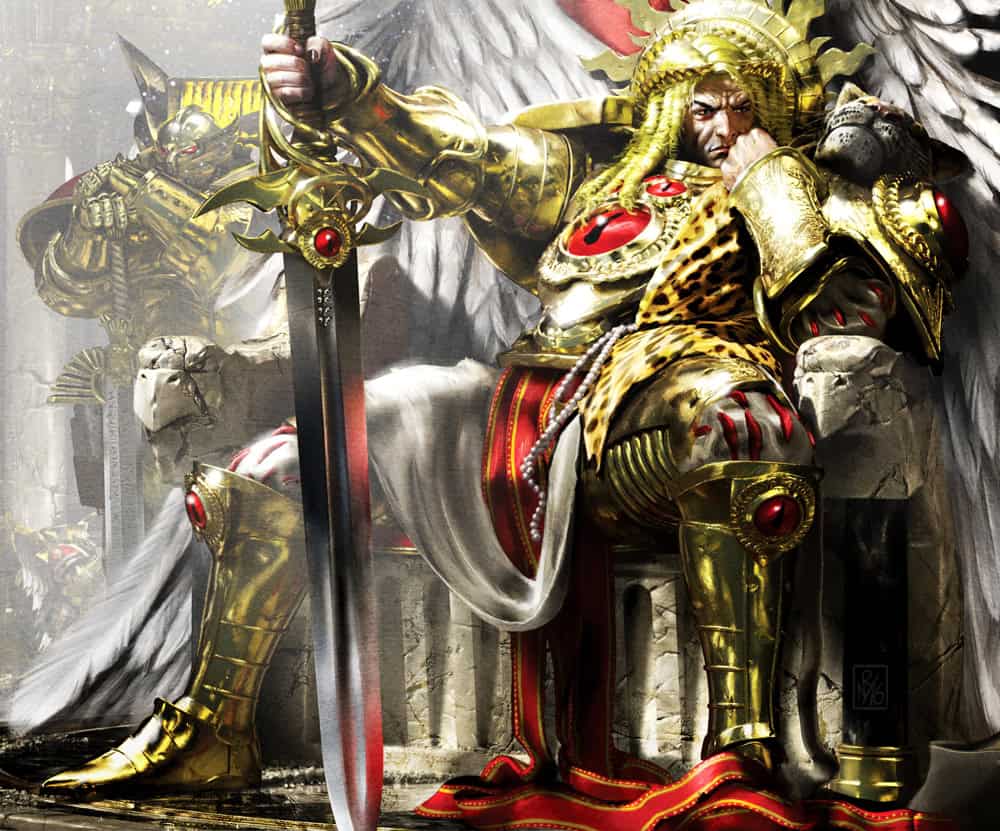
From his awe-inspiring wings to his legendary last stand against Horus, Sanguinius continues to inspire warriors and fans alike. He’s proof that even in the face of certain doom, a Primarch can go out swinging—literally. And let’s be honest, few can pull off looking both majestic and terrifying while doing it. So, whether you’re painting his miniature or retelling his story, remember this: Sanguinius might be gone, but his legend will never stop soaring.
All the Latest Warhammer Rules & Model Rumors
What do you think about the lore of Sangiunius in Warhammer 40k? Will you be playing the Blood Angels?
